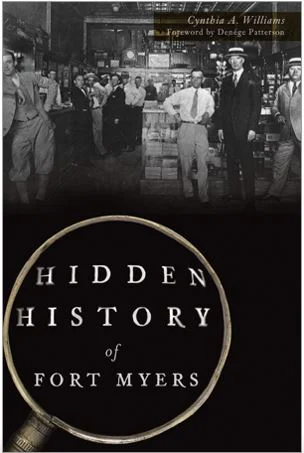Meet Cynthia A. Williams, author of Hidden History of Fort Myers
Untold stories from the City of Palms
Although best known as the winter home of Thomas Edison and Henry Ford, Fort Myers has one of the most engaging and extraordinary histories of any city in Florida. The spawn of a hurricane, Fort Myers began as a U.S. Army post during Florida's Seminole Wars. During the Civil War, it became a battleground between Confederates and Yankees for cattle and, after the war, a gun-slinging cowboy town. New York cartoonist Walt McDougall blew into the area on a fishing trip, and his glowing description lured down other wealthy Yankee sportsmen who helped turn this isolated frontier town into a modern tourist destination. Historian and author Cynthia Williams explores the hidden stories behind the growth of this beautiful city.
Meet Deborah Gleason and Charles LeBuff, authors of Postcard History Series: Sanibel and Captiva Islands
Sanibel Island was opened to homesteading in 1888, four years after the Sanibel Island Light Station was completed, and boats tanging from steamer to schooners were drawn to the islands The islands' prairie-like savannahs, where the threat of freeze was rare, were perfect for farming. Inns and hotels appeared to service newcomers who came to stake a homesteading claim, fish for silver king tarpon, or explore the tropical frontier. Others came seeking seashells, as Sanibel and Captiva Islands were legendary among shell collectors everywhere.
The authors arrived a bit late for homesteading, each finding an island niche in 1958. Charles LeBuff came to work at Sanibel National Wildlife Refuge and lived in one of the lighthouse quarters for 22 years. He became a charter member of the Sanibel City Council and had a part in keeping Sanibel Sanibel. Deborah Gleason grew up on the beach, helping with family rental cottages and later helping visitors become islanders in the world of real estate. She now serves as chairperson of the Sanibel Historical Preservation Committee.


